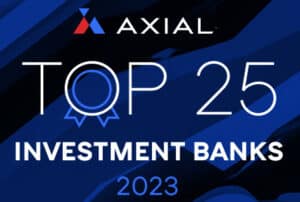
This M&A business will drive you crazy. It’s more like a sport than a business. Besides perseverance, optimism and competence, the most important quality for longevity is having a thick skin.
I recently learned that two separate tire/service chains I had met with over the years had each transacted with single buyers that knocked on their doors in what we call a “negotiated” transaction.
Now neither of these businesses was performing anywhere close to their potential, so it’s fair to say that they likely had a bit of “hair” on them. Nevertheless, they were in Texas, one of the big five states.
I can easily see how at least 25 strategic buyers and maybe 25 private equity groups — half in Texas — might have signed non-disclosure agreements (NDAs) to look at each business and we might have generated maybe seven solid offers for each, had we been hired. But we weren’t. That’s disappointing.
I suppose when I don’t get disappointed about losing out on opportunities like that, it’s time for me to hang it up. I’m channeling my disappointment into understanding why a seller would choose to deal with only one buyer, as opposed to — here’s my spin — believing in the free market, competition and auctions.
In the public markets, the use of public auctions for business sales is commonplace. We saw how in 2019, Les Schwab Tire Centers publicly announced that they hired Goldman Sachs to sell the company. They had no problem letting the whole world know.
Now, in the private capital markets, sellers are more concerned with confidentiality, so no one finds out a business is for sale. We use what are called confidential private auctions.
An example of a private auction was when my firm was hired to sell Nokian Tyres’ U.S.-located Vianor stores to strategic buyers. We developed a package describing the business and reached out to an approved list of buyers that happened to include the preferred buyer who acquired the chain, Gill’s Point S. Nokian could have chosen a “negotiated’ transaction with Gill’s Point S, but decided to use market forces to get closer to a market price. A negotiated transaction is a bilateral and often exclusive negotiation, with only one buyer at a time.
To help me understand this issue better, I looked at 15 published academic research studies dealing with this topic. In “Auctions versus Negotiations” by Bulow & Kemperer (American Economic Association, 1996), the authors write that the value of negotiating skills is small, compared with the value of having additional competition.
“Our analysis indicates that if the board expects at least one extra serious bidder to appear, then it should generally not negotiate and should directly begin an auction.”
In 2009, the authors further declared in another paper that “sellers will generally prefer auctions and buyers will generally prefer sequential mechanisms,” like negotiations.
In 2023’s “Auctions or Negotiations: A Theory of How Firms are Sold,” the University of Houston’s Rajkamal Vasu observes that in negotiations, “the competitive pressure is across the table between the
seller and the buyer, in contrast to an auction, where the competitive pressure is between buyers who are on the same side of the table among buyers.”
Vasu incorporates the variable of risk into his equations and finds that “more risk-averse sellers choose auctions more often,” which I interpret as auctions are considered the safer way to get the best price. He also finds that “the average transaction price in auctions is greater than in negotiations, if and only if the seller’s risk aversion is above a certain threshold.”
In Vasu’s model, he observes that with exclusive negotiations, transaction value decreases as the seller’s risk aversion increases because a more risk-averse seller is willing to accept lower bids. “However, in the case of auctions, the buyers bid the same, irrespective of the seller’s risk aversion.”
The final word goes to “Negotiation, Auction or Negotiauction?!” by Liu, Officer & Tu of Iowa State, Loyola Marymount and Southern Illinois University, published in October 2022. The authors studied 322 public deals between 2014 and 2019 that totaled more than $2.4 trillion in value. They found that in the real world, 29% of deals are auctions involving 10 or more buyers, 28% were negotiations with only one buyer and the 43% remaining were “negotiauctions” involving two to nine bidders, which started as an auction and morphed into negotiating with only one buyer. The key takeaway for me was that 72% of their deals had multiple competing bidders early in the process, even though many ended by negotiating with only one buyer.
Guhan Subramian in his book, “Dealmaking: The New Strategy of Negotiauctions,” points out that an auction helps “create the perception of competition when there isn’t any.” Many auctions are run with only one bidder and as long as that bidder believes they are competing with somebody else, it can still work out just fine.
Michael McGregor is a Managing Director at FOCUS Investment Banking (focusbankers.com/tire-and-service) and advises and assists multi-location tire dealers on mergers and acquisitions in the automotive aftermarket. For more information, contact him at [email protected]. This article was previously published on Modern Tire Dealer.













